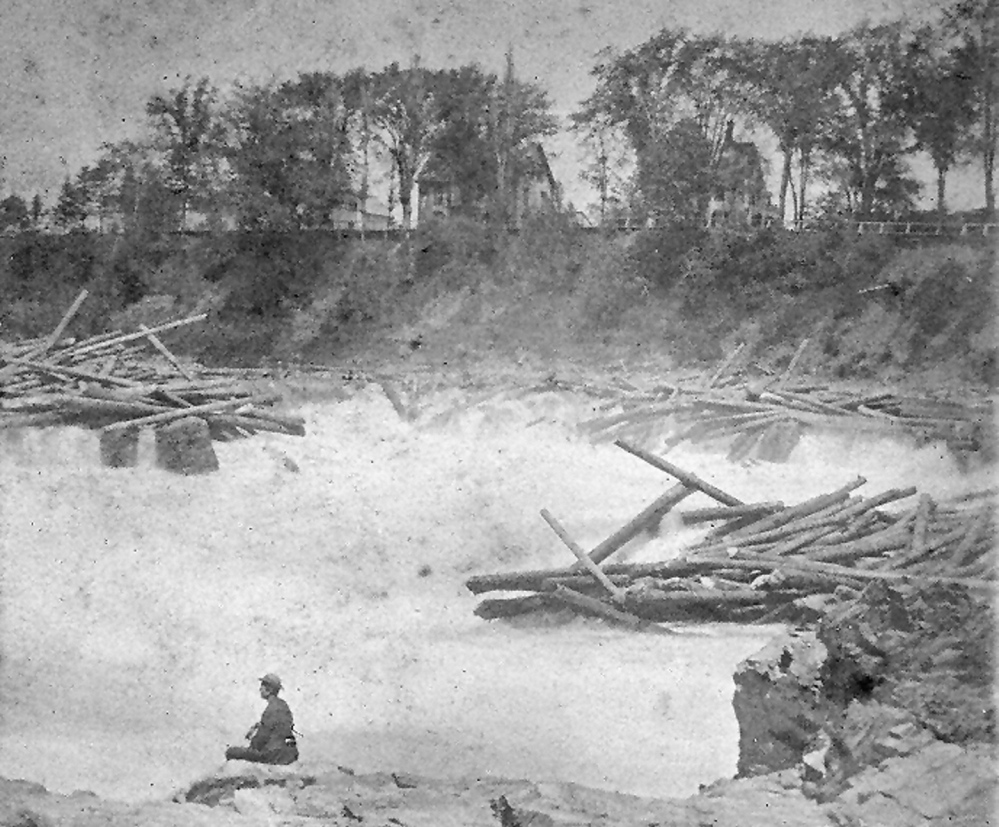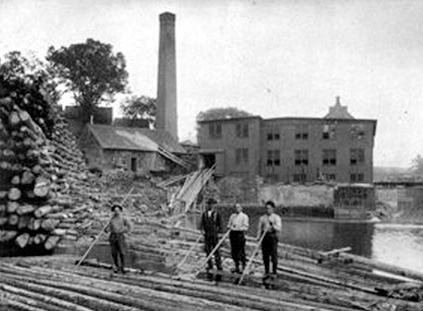SKOWHEGAN — David Calder was just 16 years old when he started working as a river driver on the Kennebec River, floating logs down the river from the northern Maine woods to paper mills along the river.
Calder, a Skowhegan resident, worked as a driver for 10 years, starting in April each year when the ice was breaking up on the river and water levels were high enough to move the wood.
“We would start hanging booms and work upriver, at each dam hanging a boom. That took about a month and then in June we would start sluicing wood,” said Calder, as he explained the typical season for the river drives, which took place annually on the Kennebec from the mid-1800s through 1976.
On Wednesday Calder was one of several local river drivers, people who floated logs down the Kennebec as a method of transport, to speak at the Skowhegan Free Public Library. The discussion was hosted by the Skowhegan History House, where a museum exhibit called “The Old Kennebec— Skowhegan’s First Highway” will open next month.
About 60 people crowded into the library to attend the event, which started with live music provided by Calder, who is also known as a songwriter inspired by life in central Maine.
“The story of the river drivers is essential to Skowhegan. What we want to do is tell that story, and this is the first step in the process,” said Melvin Burnham, director of the Skowhegan History House. The museum is dedicated to preserving and archiving the history of the town located along the Kennebec River.
The last river drive on the Kennebec was in 1976. After that, legislation stopped the drives because of concerns about pollution of waterways and a desire for greater access to the rivers for recreational purposes, according to Burnham. It also became less cost efficient, as many of the mills began to rely less on spruce and fir, the primary logs moved in the drives.
But at their peak, the drives employed hundreds of seasonal workers in central Maine and moved about 400,000 cords of wood per year from the northern Maine woods down to paper mills along the Kennebec.
A cord of wood measures four feet deep by four feet wide and eight feet long.
Through June, July and August crews worked on sluicing the logs downstream. Then in August they would start “taking the rear,” or traveling back upstream, gathering any wood that had been left behind and pushing it downstream, according to Calder.
Carlton Dawes, of East Madison, was one of only two men employed year-round by the Kennebec Logging Company, which ran the drives. He worked there beginning in the 1950s, making $43 per week and working six days per week before eventually going to work at Scott Paper in Winslow. “It was a hard job,” said Dawes, who worked as a foreman, built piers along the river and also built boats for the drive.
Walter Viles, who only worked on the drive for one year before becoming fully employed at the Quimby Mill in Bingham, said that although he spent most of the summer soaking wet, the job was fun.
“It was an experience everyone should have. I wished I’d done it more because I didn’t realize how much fun those guys had,” he said.
“The Old Kennebec— Skowhegan’s First Highway” will open on Tuesday, May 27, when the museum opens for the season. The museum is open Tuesday through Saturday from 10 a.m. to 4 p.m. from May 27 through Oct.11.
Rachel Ohm — 612-2368 rohm@centralmaine.com
Twitter: @rachel_ohm
Send questions/comments to the editors.





Success. Please wait for the page to reload. If the page does not reload within 5 seconds, please refresh the page.
Enter your email and password to access comments.
Hi, to comment on stories you must . This profile is in addition to your subscription and website login.
Already have a commenting profile? .
Invalid username/password.
Please check your email to confirm and complete your registration.
Only subscribers are eligible to post comments. Please subscribe or login first for digital access. Here’s why.
Use the form below to reset your password. When you've submitted your account email, we will send an email with a reset code.